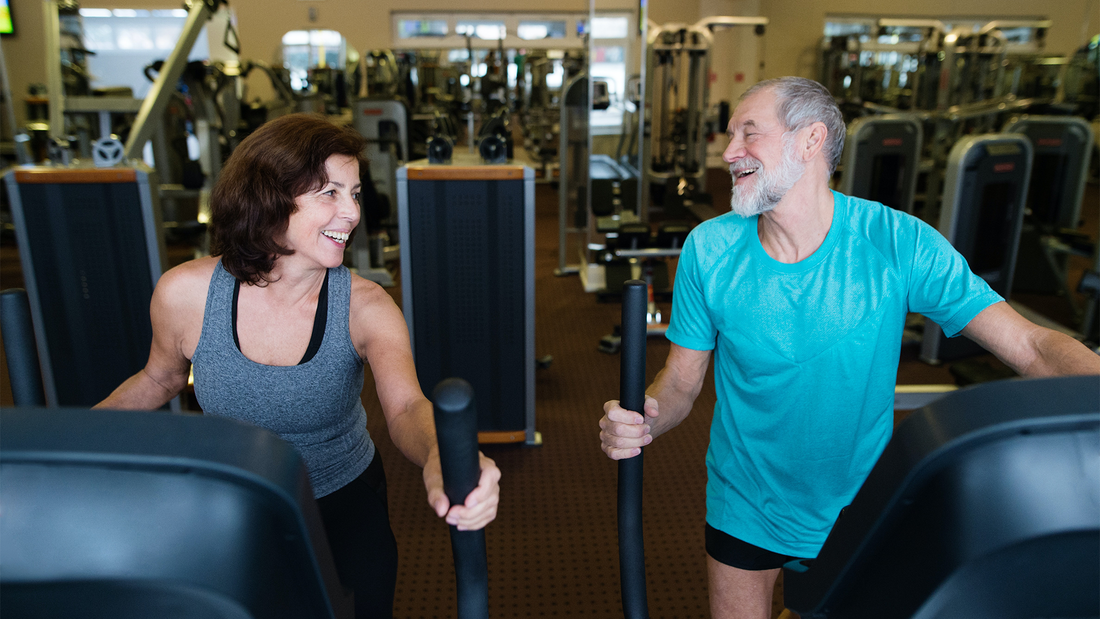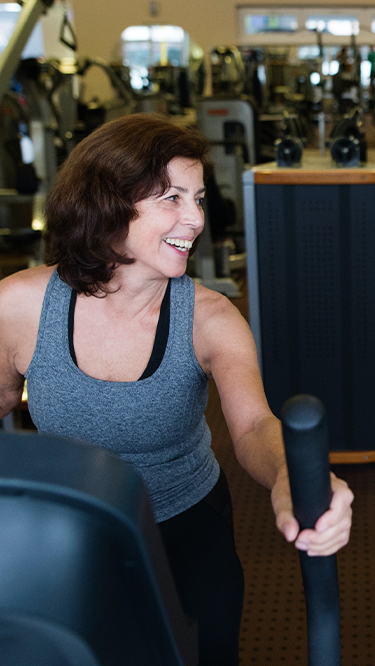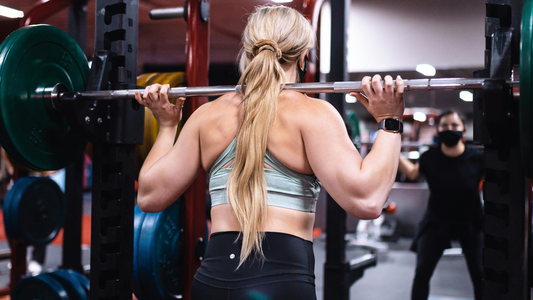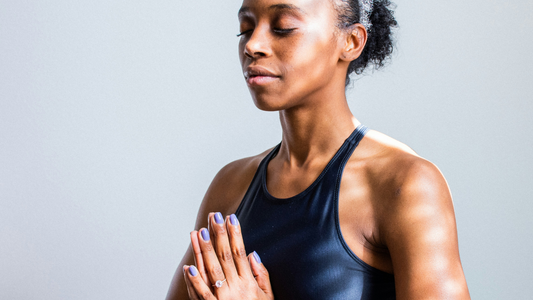

How to Approach a Fitness Plan When You're Over 50
The benefits of a fitness routine are widely known, and prioritizing fitness when you are over the age of 50 is even more important. A fitness plan will help you maintain muscle mass and flexibility, and be more resilient, have more energy, and improve your overall quality of life as you age. Taking care of your body is something you can do now that will help you for the rest of your life.
You may be new to fitness altogether or maybe you have an established fitness routine, but want to make changes as you age to ensure that you are doing what you need to do. Whatever the reason, this article will help you understand the importance of a fitness plan, design one that works for your body at this stage in your life, and find the motivation to stick with it over time.
The Benefits of a Fitness Plan
Fitness plans have a wide range of benefits, but one of the biggest is that they promote fitness and wellness consistency.
As we age, this attention to our body becomes even more important because we lose strength, flexibility, mobility, and for many postmenopausal women, bone density.
By developing a fitness plan when you're over the age of 50 (or even beforehand), you can tackle each of these issues in a way that works for you. Exercise has many benefits, and it’s important to sit down and consider what will be best for you. Most medical professionals recommend a “well-rounded” approach to fitness which includes a mix of strength-training, cardiovascular exercise, and stretching.
The right fitness plan will help reduce many of the difficulties we face as we get older, like loss of muscle mass and bone density, fall risk, high blood pressure, and the impact of chronic diseases. Thinking ahead and having a prevention-mindset is key to approaching a fitness plan when you’re over 50.
And if this is the first time you are thinking about your fitness and wellness, that’s okay! It never feels like the “right time” to get started, nor is it ever too late. Just being aware that you should begin thinking about this is the first step towards being proactive about your health.
Developing Your Fitness Plan
Building your own fitness plan from scratch may seem daunting, but there are a wealth of resources that can help you effectively plan what activities will be best for you. Whatever you do, though, be sure to consult with a doctor before jumping into activity. Your doctor will be able to provide advice and suggestions on what type of exercise to do based on your current health and family history.
When developing your fitness plan, schedule your workout sessions into your calendar or write them in your planner. This will help you remember to take time and complete them. A fitness plan will not help you if you don’t commit to it. In a similar vein, be sure to set realistic goals. If you are new to fitness, exercising every day of the week may not be the best way to start. Think about your schedule, commitments, and current fitness level when deciding the frequency.
The next thing to consider is where you will be completing your workouts. If you’re just starting out, there’s no reason to get a gym membership right away. Instead, try out home workouts, bodyweight exercises, and simple cardio like walking or riding a bike. If you like working out with other people, many gyms and boutique fitness studios offer group classes for a wide range of exercises including: yoga, Pilates, water aerobics, spin cycle, HIIT training, Zumba, and more.
Fitness Goals & Tracking
During this planning stage, you may also want to consider your fitness goals. Do you want to lose weight? Walk a few miles every week? Complete your first half marathon? Improve your overall health? Having a goal to work toward makes you more likely to stick to your routine.
Deciding on your goals early will allow you to create your plan with the end result in mind. Also, think about how you want to track your goal. If you want to walk more, tracking steps or miles walked per week might be good options. Anyone wanting to lose weight or build muscle mass will benefit from a tool like ZOZOFIT that uses 3D body scanning technology to provide users with accurate body measurements. Over time, you can see how your body measurements have changed with the ColorMetric or side-by-side scan comparison features. You can even set goals in the ZOZOFIT app, monitor your body fat percentage, and share your progress as you go along.
Choosing Exercises
Choose exercises that fit with your current health and lifestyle. There’s no need to start running if you don’t walk regularly — just start walking instead!
As we age, our bodies are less resilient, so being mindful of how exercises impact the body becomes more important when you're 50 or older. Additionally, plan to choose a variety of exercises to experience the benefits of strength training, cardio, and stretching.
How you choose exercises is up to you and your personal preference. If you enjoy yoga, then plan to attend a few yoga classes each week. To hit each of the three exercise types, look for a class that is primarily stretching focused, a power yoga or heated class, and a strength-based/alignment-focused class. Apply a similar method to any type of exercise.
If you want extra guidance on what the best workouts for you might be, consult with a personal trainer or athletic coach who can help you build a plan. There are also a wealth of resources online that feature sample workout plans that you can tailor to your own specific needs.
Remember, too, that aging doesn’t mean you can’t still live out your fitness dreams. Just because you’re considered a "mature adult" by society's standards, that doesn’t mean you can’t compete in your first triathlon or finally work up to that yoga inversion. You might just need to take a more measured, intentional approach to your fitness to ensure your continued health and safety for years to come.

![zf-w-[168px] zf-h-[40px]](http://zozofit.com/cdn/shop/t/15/assets/logo-desktop.png?v=117713855448369080381753069598)


